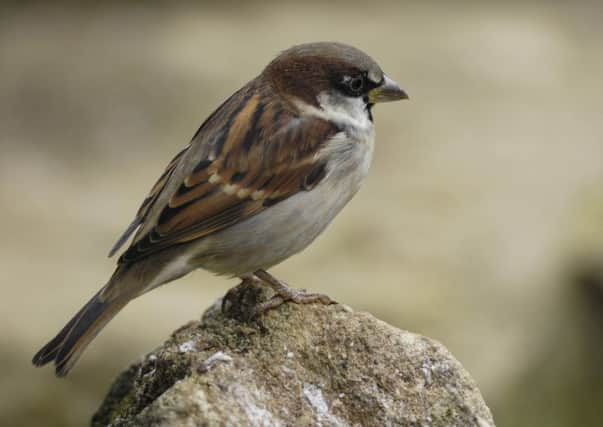Keeping an eye on our garden birds in Fife


To celebrate, RSPB Scotland is running a special event at National Trust for Scotland’s Hill of Tarvit, near Cupar, this Saturday (January 28).
This free event will be held in the gardens of the estate and RSPB Scotland is inviting people to join them between 10am and 3pm to find out all about how to attract birds and other wildlife into the garden and to make a tasty treat to help encourage birds into their gardens.
Advertisement
Hide AdAdvertisement
Hide AdRSPB Scotland Loch Leven nature reserve is also celebrating Big Garden Birdwatch on Saturday, January 28. Visitors to the popular attraction can get up close to wild garden birds with a ringing demonstration from the Tay Ringing Group at 10am and 12pm. People can also have a go at making their own nestbox to take home between 1 and 3pm to encourage birds to nest in their garden.
Big Garden Birdwatch is the world’s largest garden wildlife survey. Now in its 38th year, it takes place on January 28, 29 and 30. People are asked to spend just one hour watching and recording the birds in their garden or local public space, then send their results to the RSPB. Last year across Scotland, over 36,000 people joined in counting 626,335 feathered visitors over the weekend.
In Fife last year, the top three remained the same as in 2015 with house sparrows, starlings and blackbirds the most frequently spotted.
On a UK-level, house sparrow was followed by starling in second spot and blue tit in third and long-tailed tit flew into the top 10 for the first time in eight years. However, the song thrush, once a common garden visitor, experienced another drop, revealing a decline of 70 per cent since the Birdwatch began.
Advertisement
Hide AdAdvertisement
Hide AdRSPB Big Garden Birdwatch provides valuable information about the wildlife using our gardens in winter, enabling the RSPB to monitor trends and declines. It is also a chance to take time to enjoy the nature on our doorstep.
In response to demand, for the first time this year the Birdwatch will take place over three days, including the Monday, giving workers the opportunity to take a screen break and participate from their office gardens.
Daniel Hayhow, RSPB conservation scientist, said: “With over half a million people now regularly taking part, coupled with over 30 years worth of data, Big Garden Birdwatch allows us to monitor trends and helps us understand how birds are faring. With results from so many gardens, we are able to create a ‘snapshot’ of the birds visiting at this time of year across the UK. Even if you see nothing during your Big Garden Birdwatch hour, that’s important information too, so please let us know.”
As well as counting winged garden visitors, the RSPB is once again asking participants to log some of the other wildlife they have seen throughout the year, such as hedgehogs, foxes and moles. With the survey taking place across the whole of the UK there are some species on the other wildlife list that are not found in Scotland, such as grass snakes and stag beetles, but reports of the other wildlife on this list visiting people’s gardens or public spaces are important.
Advertisement
Hide AdAdvertisement
Hide AdDaniel added: “Our wildlife is facing a tough time. For example it is estimated that we’ve lost more than half of our hedgehogs in the last 50 years. We’re going to include this part of the survey every year now, enabling us to monitor the distribution of our other wildlife as well as trends in bird numbers.”